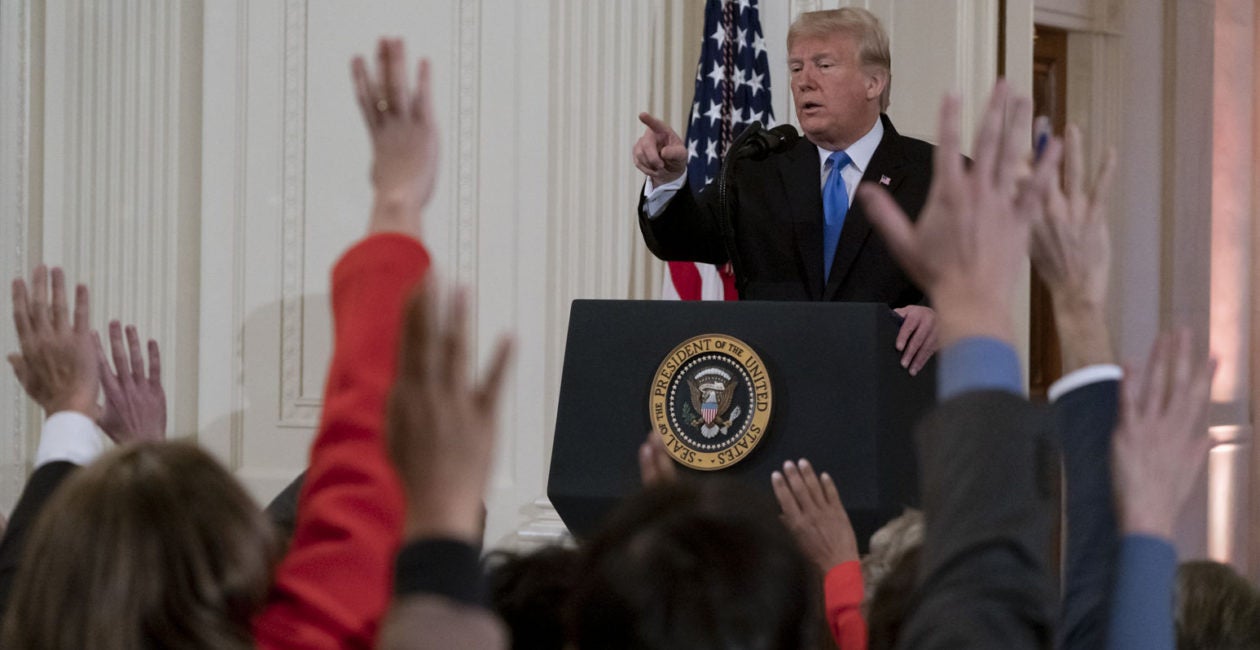Many liberals see 'the system' as a way to achieve partisan
goals, not as a set of idealistic values.
In the
liberal imagination there are only four ways to lose elections — and none have
to do with their increasingly leftist turn, their hysterics, or their
one-dimensional identity politics. Democrats lose because of “gerrymandering,”
“voter suppression” (sometimes known as “asking for ID”), Russian mind-control
rays deployed by social media, and our antiquated and unfair Constitution.
The final
one of these excuses is becoming increasingly popular among liberal pundits who
continue to invent new crises to freak out about.
Take Vox’s Ezra Klein, a longtime champion of direct democracy: “I
don’t think people are ready for the crisis that will follow if Democrats win
the House popular vote but not the majority,” he tweeted before
the midterms. “After Kavanaugh, Trump, Garland, Citizens United, Bush v. Gore,
etc, the party is on the edge of losing faith in the system (and reasonably
so).”
The “House popular vote” now joins the
“national popular vote” and “Senate popular vote”
(a particularly dishonest one considering California didn’t have a Republican
on the ballot) as fictional gauges of governance used by Democrats who aren’t
brave enough to say they oppose the fundamental anti-majoritarianism that girds
the Constitution.
Otherwise, why would Democrats lose faith in a “system” that is
doing exactly what was intended? The Constitution explicitly protects small
states (and individuals) from national majorities. The argument for diffusing
democracy and checking a strong federal government is laid out in The
Federalist Papers and codified on an array of levels. This was done on purpose.
It is the system.
I mean,
do Democrats really believe the Electoral College was constructed to always
correspond with the national vote? Do they believe that the signers of the
Constitution were unaware that some states would be far bigger than others in
the future? If the Founders didn’t want Virginia to dictate how people in
Delaware lived in 1787, why would they want California to dictate how people in
Wyoming live in 2018? If you don’t believe this kind of proportionality is a
vital part of American governance, you don’t believe in American governance.
You can despise Brett Kavanaugh all you like, but why would
Democrats lose faith in “the system” that saw Republicans follow directions
laid out in the Constitution for confirming a Supreme Court nominee? Why would
Democrats lose faith in “the system” that elected Donald Trump using the same
Electoral College that every other president used? Why would they lose faith in
a system that houses a Supreme Court that stops the other branches from banning
political speech? When the Supreme Court affirmed the election of George W.
Bush, it turned out to be the right call.
It’s
because they see the system as a way to achieve partisan goals, not as a set of
politically neutral idealistic values.
It’s not a civics problem, either. One hopes liberal activists
like Ken Dilanian, who wonders “how
much longer the American majority will tolerate being pushed around by a rural
minority,” understand sixth-grade civics. New
York Times columnist Paul Krugman surely knows that the
Constitution doesn’t give
“disproportionate weight” to smaller states. It intentionally gives all states
the same weight in the Senate. Krugman only finds this idea “disproportionate”
because it protects millions of Americans from the centralized coercive state
that he envisions for them. The disproportionality he sees merely reflects his
own concerns. It has nothing to do with the system.
Also, rural America doesn’t “bully” people like Dilanian. The
federal government was never supposed to be this powerful. The non-“forward moving” America—those
dummies Krugman would like to nanny from Washington—doesn’t very much care how
Dilanian lives. He, on the other hand, has big plans for them.
It should
be noted that these majoritarians throw millions Americans aside to make this
argument. We don’t know how a national majority would vote. There are many
millions of Republicans in New York and California who don’t involve themselves
in the futility of state politics. There are more Republicans in California
than there are in Wyoming.
But as you can see on Election Day, liberals have made
“democracy”— a word mentioned zero times in the Constitution or the Declaration
of Independence—into a sacramental rite. Getting more votes in an election
outweighs the inherent rights of liberty that are laid out in the document.
Unless, of course, that right happens to incidentally intersect with some
advantageous partisan idea, like birthright citizenship; then Democrats become
strict originalists. Everything else is up for discussion. Well, up for
discussion now. It wasn’t a big topic for the hundred or so years Democrats
were vastly overrepresented in the House.
The only
reason these folks, who claim to want to save Constitution from Trump, see
crisis in the “system” is that it fails to deliver for them politically.
They’re not losing faith in the system. They just don’t like the system.
David Harsanyi is a Senior Editor at The Federalist. He
is the author of the new book, First Freedom: A Ride Through
America's Enduring History with the Gun, From the Revolution to Today. Follow
him on Twitter.
Constitution democracy Democrats Electoral
College institutionsmajoritarianism partisan
hacks partisanship Senate the left





